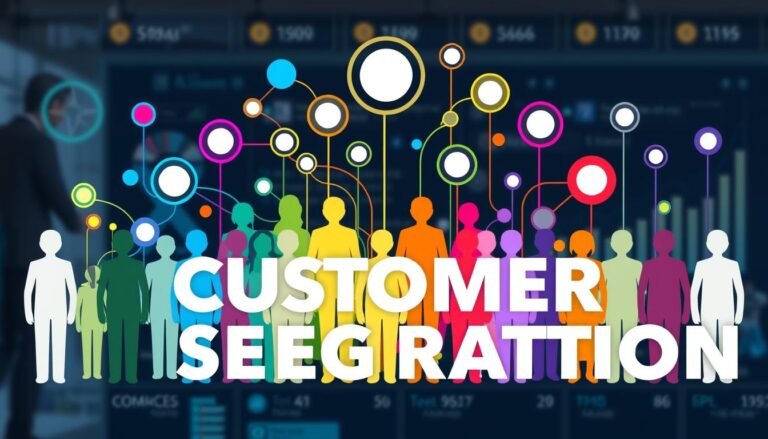The Business Case for Customer Advocacy: More Than Just a Feel-Good Strategy
In today’s competitive market, is customer advocacy merely a buzzword or a potent strategy with tangible benefits? How do companies transform enthusiastic customers into powerful advocates who drive growth and enhance their bottom line? While it’s clear that fostering loyal customer relationships is valuable, proving the direct return on investment (ROI) of customer advocacy can be complex.
In this article, we’ll explore how to effectively measure the ROI of customer advocacy, overcome challenges in this process, and maximize its impact for your business. We’ll dive into key metrics, discuss strategies for overcoming measurement hurdles, and offer insights on leveraging advocacy for sustained growth and innovation.
Key Metrics to Measure Customer Advocacy ROI
Understanding the ROI of customer advocacy requires a deep dive into various metrics that showcase the tangible benefits of a well-executed advocacy strategy. These metrics not only highlight the financial impact but also provide insights into the effectiveness of your advocacy efforts.
Customer Lifetime Value (CLTV) and Customer Acquisition Cost (CAC)
Customer Lifetime Value (CLTV) represents the total revenue a business can expect from a single customer throughout their relationship with the company. In contrast, Customer Acquisition Cost (CAC) measures the cost associated with acquiring a new customer. The relationship between CLTV and CAC is crucial in evaluating customer advocacy.
An effective customer advocacy strategy can significantly enhance CLTV by encouraging repeat purchases and fostering customer loyalty. Advocates tend to stay longer, spend more, and are more likely to refer others. This increase in CLTV, paired with a potentially lower CAC due to organic referrals, can markedly improve overall profitability. Calculating CLTV involves analyzing average purchase value, purchase frequency, and customer retention rates. Reducing CAC through advocacy-driven referrals can also optimize your marketing spend and boost your bottom line.
Sales Cycle Length and Conversion Rates
Sales cycle length and conversion rates are critical indicators of how effectively advocacy can streamline the sales process. Advocacy accelerates the sales cycle by leveraging positive customer experiences to influence potential buyers. Advocates often provide testimonials and referrals that significantly shorten the time needed to convert prospects into customers.
Measuring the impact of advocacy on sales cycle length involves comparing the time taken to close deals from advocacy-driven leads versus traditional oness. Conversion rates can also be tracked to assess how advocacy influences the likelihood of prospects becoming paying customers. An increase in conversion rates and a reduction in sales cycle length are strong indicators of the effectiveness of your customer advocacy strategy.
Net Promoter Score (NPS) and Customer Satisfaction (CSAT)
Net Promoter Score (NPS) and Customer Satisfaction (CSAT) are pivotal in assessing the effectiveness of customer advocacy. NPS measures the likelihood of customers recommending your brand to others, while CSAT evaluates overall satisfaction with your products or services.
High NPS scores are often indicative of strong customer advocacy, as advocates are more likely to recommend your brand. Similarly, high CSAT scores suggest that customers are satisfied, which correlates with their propensity to advocate on your behalf. Tracking these scores over time provides valuable insights into how advocacy efforts influence customer sentiment and overall satisfaction.
Social Media Engagement and Referral Revenue
Social media engagement and referral revenue are essential metrics for understanding the digital impact of customer advocacy. Engaged advocates actively share their positive experiences on social platforms, driving brand visibility and attracting potential customers.
Measuring social media engagement involves analyzing metrics such as shares, likes, comments, and mentions. Referral revenue, on the other hand, tracks the revenue generated from customers who were referred by existing advocates. By evaluating these metrics, businesses can gauge the effectiveness of their advocacy programs in driving online engagement and generating additional revenue.
Overcoming Challenges in Measuring Customer Advocacy ROI
Measuring the ROI of customer advocacy is not without its challenges. From attributing revenue to advocacy efforts to collecting and analyzing relevant data, businesses must navigate several hurdles to accurately assess the impact of their strategies.
Attributing Revenue to Customer Advocacy
Attributing revenue directly to customer advocacy can be challenging due to the complex nature of the customer journey. Advocacy often influences multiple touchpoints and interactions, making it difficult to isolate the specific impact of advocacy on revenue.
To address this challenge, businesses can implement advanced analytics and attribution models that account for the various ways in which advocacy contributes to revenue. Techniques such as multi-touch attribution and data-driven attribution can help provide a more accurate picture of the role advocacy plays in driving sales and revenue.
Data Collection and Analysis Challenges
Effective measurement of customer advocacy ROI requires robust data collection and analysis. Gathering data from various sources, such as customer feedback, sales reports, and social media interactions, can be overwhelming. Ensuring data accuracy and consistency is also crucial for reliable analysis.
Investing in data management tools and systems can help streamline the data collection process and improve the accuracy of your analysis. Additionally, leveraging data visualization techniques can make it easier to interpret and communicate the findings.
Demonstrating Long-Term Impact
Demonstrating the long-term impact of customer advocacy can be challenging, as the benefits of advocacy often accumulate over time. Short-term metrics may not fully capture the sustained value of customer advocacy efforts.
To address this, businesses should focus on tracking long-term metrics such as customer retention rates, lifetime value, and overall growth. Developing a clear framework for evaluating the long-term impact of advocacy can help in presenting a comprehensive view of its benefits.
Maximizing the Impact of Customer Advocacy
To fully realize the benefits of customer advocacy, businesses must not only measure its impact but also actively work to maximize its effectiveness. This involves communicating ROI to stakeholders, allocating resources based on data, continuously optimizing advocacy programs, and leveraging advocacy for innovation.
Communicating ROI to Stakeholders
Effectively communicating the ROI of customer advocacy to stakeholders is essential for securing support and resources. Providing clear and compelling data on the financial and strategic benefits of advocacy can help stakeholders understand its value.
Create detailed reports and presentations that highlight key metrics and insights, and use visual aids to illustrate the impact of advocacy on business performance. Tailor your communication to the specific interests and concerns of your stakeholders to ensure that your message resonates.
Allocating Resources Based on ROI Data
A good customer advocacy strategy will often hinge on allocating resources effectively based on ROI data. By analyzing the impact of advocacy efforts, you can identify areas where additional resources can drive the greatest return.
Prioritize investments in advocacy programs and initiatives that demonstrate a strong ROI. This may involve increasing budget allocations for successful campaigns, investing in advocacy training, or enhancing your referral programs. Regularly review and adjust your resource allocation to align with evolving advocacy goals and performance metrics.
Continuous Optimization of Customer Advocacy Programs
Continuous optimization of customer advocacy programs is key to maintaining their effectiveness and maximizing their impact. Regularly assess the performance of your advocacy initiatives and identify opportunities for improvement.
Implement feedback loops to gather insights from advocates and customers, and use this feedback to refine your programs. Stay updated on customer advocacy best practices and industry trends to ensure that your programs remain relevant and effective.
Leveraging Customer Advocacy for Innovation
This involves using insights from advocates to drive product and service improvements. Advocates can provide valuable feedback and suggestions that can help shape new offerings and enhance existing ones.
Engage with your advocates to gather their input on potential innovations and use their insights to inform your product development and marketing strategies. By integrating customer feedback into your innovation process, you can create offerings that better meet customer needs and preferences.
Customer Advocacy as a Growth Driver
To wrap up, customer advocacy is more than just a feel-good strategy; it’s a powerful driver of business growth and success. By measuring key metrics, overcoming challenges in ROI assessment, and maximizing the impact of your advocacy efforts, you can unlock significant benefits for your organization. Embracing customer advocacy not only fosters loyalty and satisfaction but also positions your business for long-term success and innovation.






